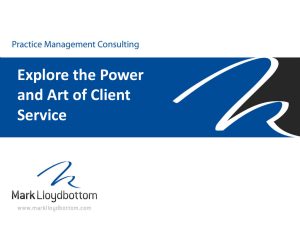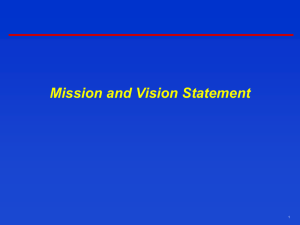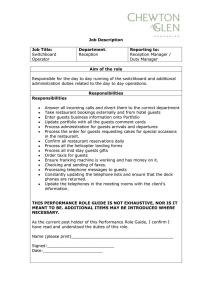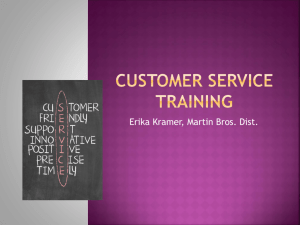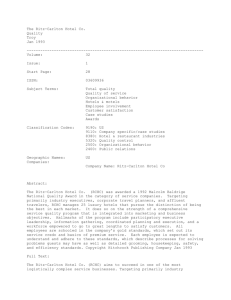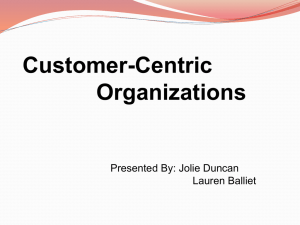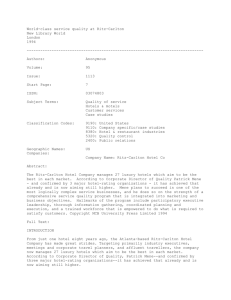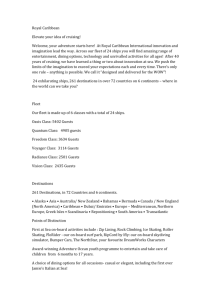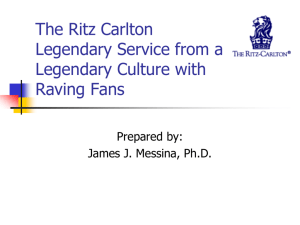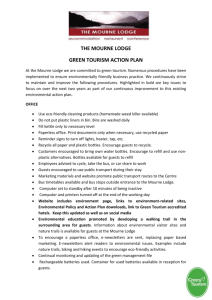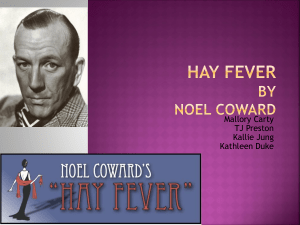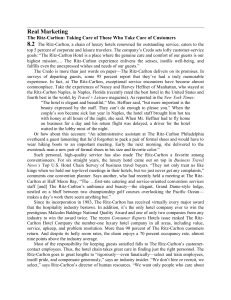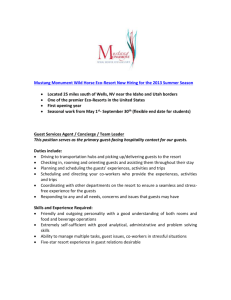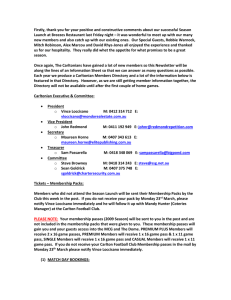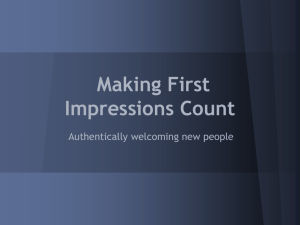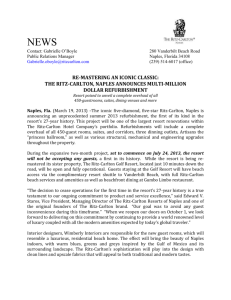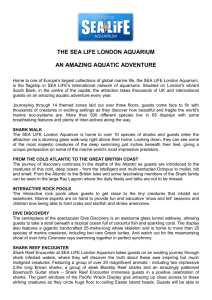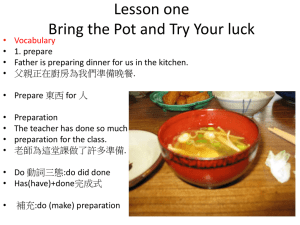Environment and Culture
advertisement
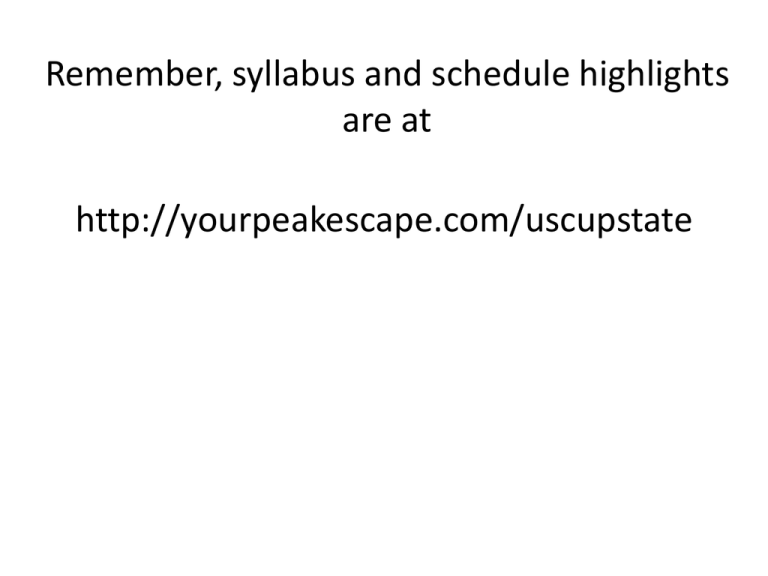
Remember, syllabus and schedule highlights are at http://yourpeakescape.com/uscupstate Chapter 2: Environment and Culture Macro environment? Competitive environment? How do companies respond to uncertainty? What is culture? How does culture affect responses? “The essence of a business is outside itself.” – Peter Drucker Inputs, processes, outputs “Open system”—company is affected by and affects its environment 2-3 Macroenvironment External environment can influence strategic decisions and company’s success: Laws and regulations Economy Technology Demographics Social values Ecological factors/trends Fighting Fat with Videogames How does Nintendo use the public health issue of obesity to its competitive advantage in the marketplace? What demographic trends might influence new Wii Fit products? Competitive Environment: Porter’s 5 Forces model Threat of new entrants [into our market/industry] Supplier power [when bargaining with us] Rivalry among existing firms [we’re here] Threat of substitutes [for our product] Buyer power [when bargaining with us] Let’s apply Porter’s 5 Forces model to Ben & Jerry’s Who is the Competition? Worldwide: small and large domestic firms? regional competitors? overseas firms? newer entrants? New Entrants Easier when entry barriers are low: Government policy (e.g., patent laws) Capital requirements (start-up costs) Brand identification (consumer brand loyalty) Cost disadvantages (Established economies of scale) Distribution channels (e.g., supermarket shelf space) Substitutes and Complements Substitute Threat posted by an alternative Technological change is typical source Complement: Opportunity created when one product is used in conjunction with another Resource Suppliers People – e.g., schools Raw materials –producers, wholesalers, and distributors Information – e.g., news media, researchers Money – investors and creditors Supplier Issues Price Quality Alternatives Switching costs Buyers: customers Final consumers –buy products in their finished form. Intermediate consumers – buy raw materials or wholesale products to process and re-sell to final consumers. May have great influence over price, quality, design, service. Environment Uncertainty Can be hard to understand environment, predict the future. Complexity – How many issues? How interconnected? Dynamism – How much discontinuous change in the industry? Identifying Your Environment Scenario Development Cirque du Soleil and Ben & Jerry’s? Scenarios – alternative possible futures Best-case scenario Worst-case scenario Multiple scenarios lead to stronger plans Responding to Uncertainty Adapt to the environment Influence the environment Move to a new environment Can do independently or cooperate with others Independent strategy examples Compete—exploit a competence or improve internally Help competitors in an effort to improve relations Public relations—work to create a favorable image Legal action—engage in legal battles Political action—try to influence politicians Cooperative strategy examples Contracting—agreements with outsiders to exchange products, information, patents Coopting—absorb new outsiders into your company or its planning/leadership work Coalition—get others to act jointly on political initiatives Change your environment’s boundaries Move into new suitable market or industry. Diversification – expand into new markets, industires, or locations to reduce dependence on a market or technology Merge—combine companies Acquire—buy businesses Divest—sell off businesses Trend analysis Environmental trends that may foster change Economic trends Social trends Trends in demographic patterns Political/regulatory trends Technology trends Ecological trends Industry analysis: 5 IMPORTANT issues Defining the industry Choosing dimensions/criteria for analysis Predicting behavior Addressing firm-level differences Dealing with dynamism and innovation Now…Organization Culture Culture – shared assumptions and values about The company Its goals and practices What’s important How the world works How we interact and get things done Strong culture Influences how people think and behave Common belief in the company’s goals, priorities and practices Good if it encourages appropriate behavior Weak culture Few common values Confusion about corporate goals Unclear guiding principles Fosters conflict and poor performance Clues to culture Mission statements, official goals Business practices (how a company responds to problems, makes strategic decisions, and treats employees and customers) Symbols, rites, and ceremonies Stories (myths, legends, and true stories) The Ritz Carlton Service Values “I Am Proud To Be Ritz-Carlton” – – – – – – – – – – – – I build strong relationships and create Ritz-Carlton guests for life. I am always responsive to the expressed and unexpressed wishes and needs of our guests. I am empowered to create unique, memorable and personal experiences for our guests. I understand my role in achieving the Key Success Factors and creating The Ritz-Carlton Mystique. I continuously seek opportunities to innovate and improve The Ritz-Carlton experience. I own and immediately resolve guest problems. I create a work environment of teamwork and lateral service so that the needs of our guests and each other are met. I have the opportunity to continuously learn and grow. I am involved in the planning of the work that affects me. I am proud of my professional appearance, language and behavior. I protect the privacy and security of our guests, my fellow employees and the company's confidential information and assets. I am responsible for uncompromising levels of cleanliness and creating a safe and accident-free environment. Excerpt from www.corporate.ritzcarlton.com So…here’s a question The Ritz Carlton service values demonstrate which aspect of culture? 1. 2. 3. 4. corporate mission statement business practices ceremony myth What kind of culture do you want to work in? For questions that will help you figure out the culture of a company, see: http://career-advice.monster.com/jobinterview/interview-preparation/assesscompany-culture-best-fit/article.aspx What we just did Chapter 2: Environment and Culture What is the macro environment? What is the competitive environment? How do companies respond to uncertainty? What is culture? How does culture affect responses?
